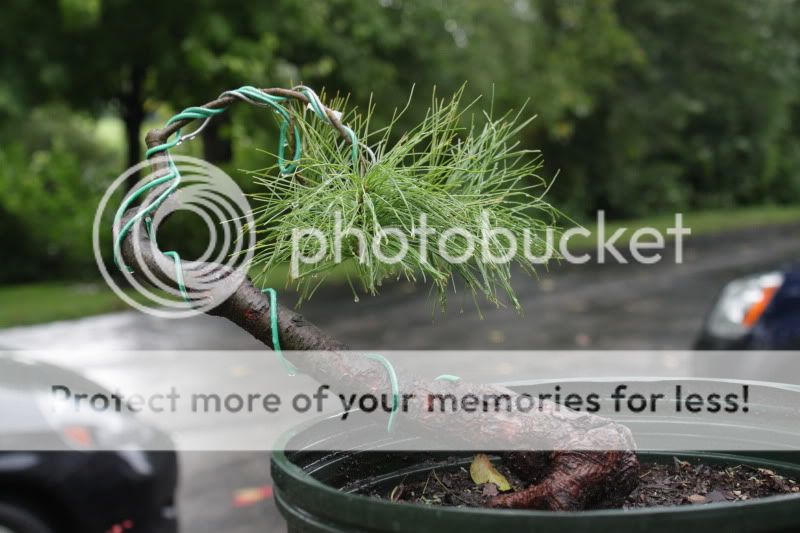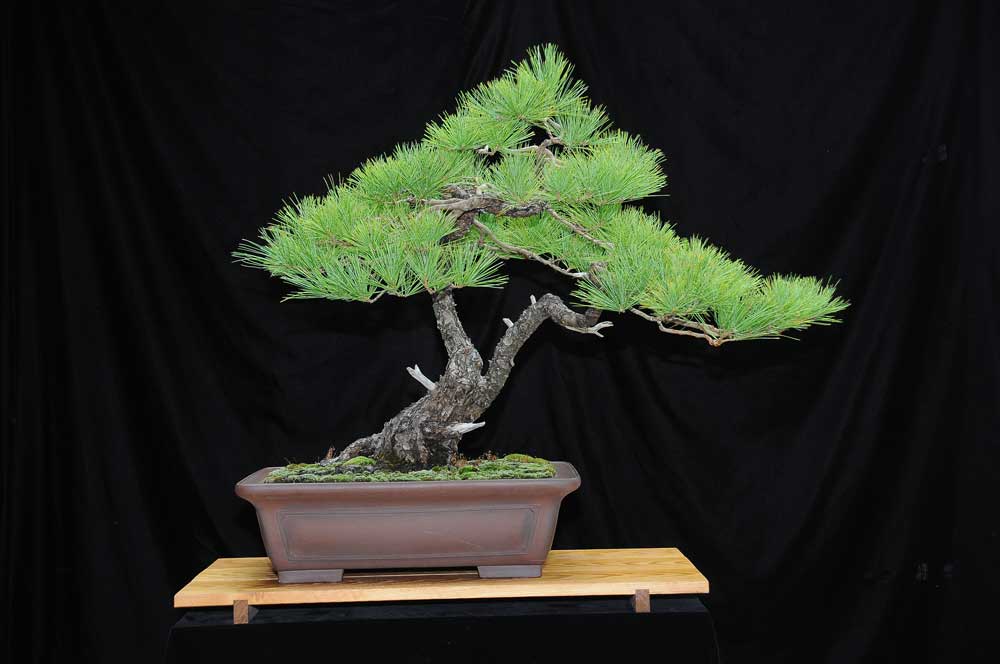Since I speak German I thought I translate some of the text from the blog posting. The title translates to: The (design) Path of a Pinus strobus (that wasn't hard to understand... I know.

First picture
This it is, the Pinus strobus or Wymouth Pine in German, that belongs to the family of pinaceae. This five needle pine is native to North America.
Second Picture
It was found along a main street, planted in a concrete planter. In 2007 I transplanted it into a plastic (bonsai) pot. The age of the pine is about 50 years.
Third Picture
In 2009, it was finally time to do the first round of design (on the tree) during a workshop of the AK Saarwellingen (local bonsai club) in the Old Townhouse (a nice restaurant/pub/meeting place (I know it, great beer and food).
Fourth Picture
The design of Pinus strobus as bonsai is very rare, not because it is not a beautiful tree, but because the branches break as easily as glas.
Next couple of pictures:
That required special measures/care. Of course the dead wood was worked on first, then the branches were first wrapped with gauze followed with old bicycle inner tube. This job was continued down to the smallest branches (because of the danger of breakage).
The attached broom stick was used to pull up a 4cm thick (1.6 inches) and only 15cm ( 6inches) long branch.
This is how the tree looked like after the first round of training. In the picture it is also easy to see the short branch that was pulled up.
The pulling higher of that branch proceeded in small steps. It continued in small steps.
In 2010 it was finally complete. The branch was were I wanted it to be without breaking. It (the tree) was also potted in its first pot.
This is how it looked in the spring of 2010.
Last Picture
And this is how it looks today. In one or two years it also might be shown at a BCD Exhibition (BCD - German Bonsai Club). I hope that you liked my short report. And to all that might be interested now (in bonsai) just stop by our club and participate.
Until then, A.Hans
Based on the description of where he found this tree and the perceived age I would speculate that this is the dwarf form of Pinus strobus. You can find Pinus strobus nana and similar cultivars quite often in German nurseries and big box stores. The regular EWP is much more rare. However, if this is really the dwarf Nana form of P. strobus then the graft is really well done and not visible at all.
I hope you enjoyed the translation of the German blog. It's interesting to see what he did with the tree.




